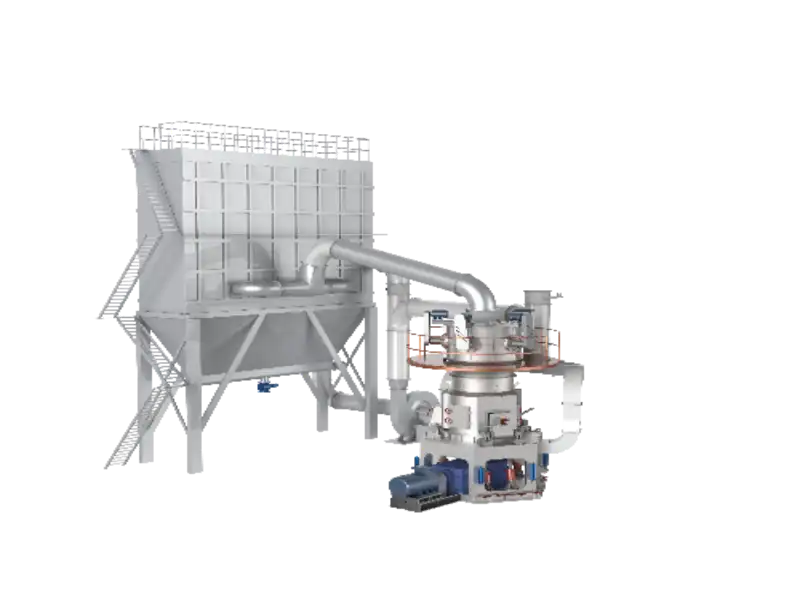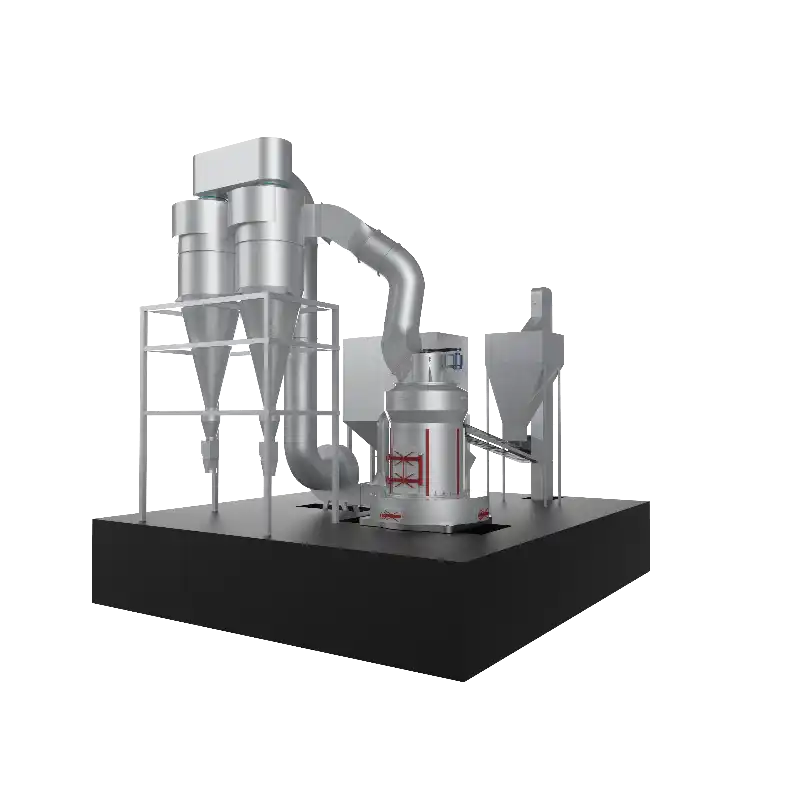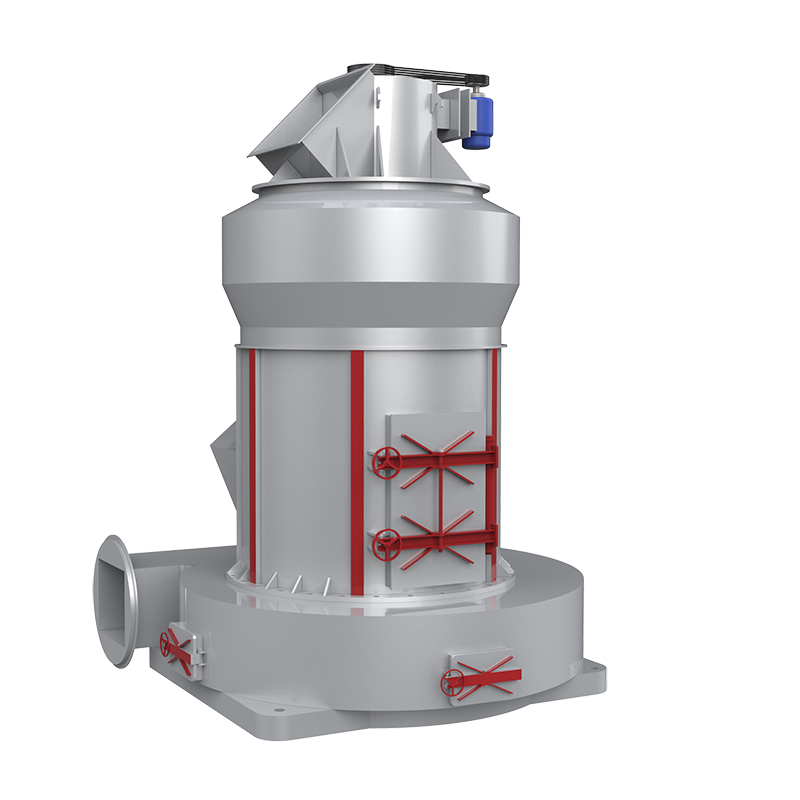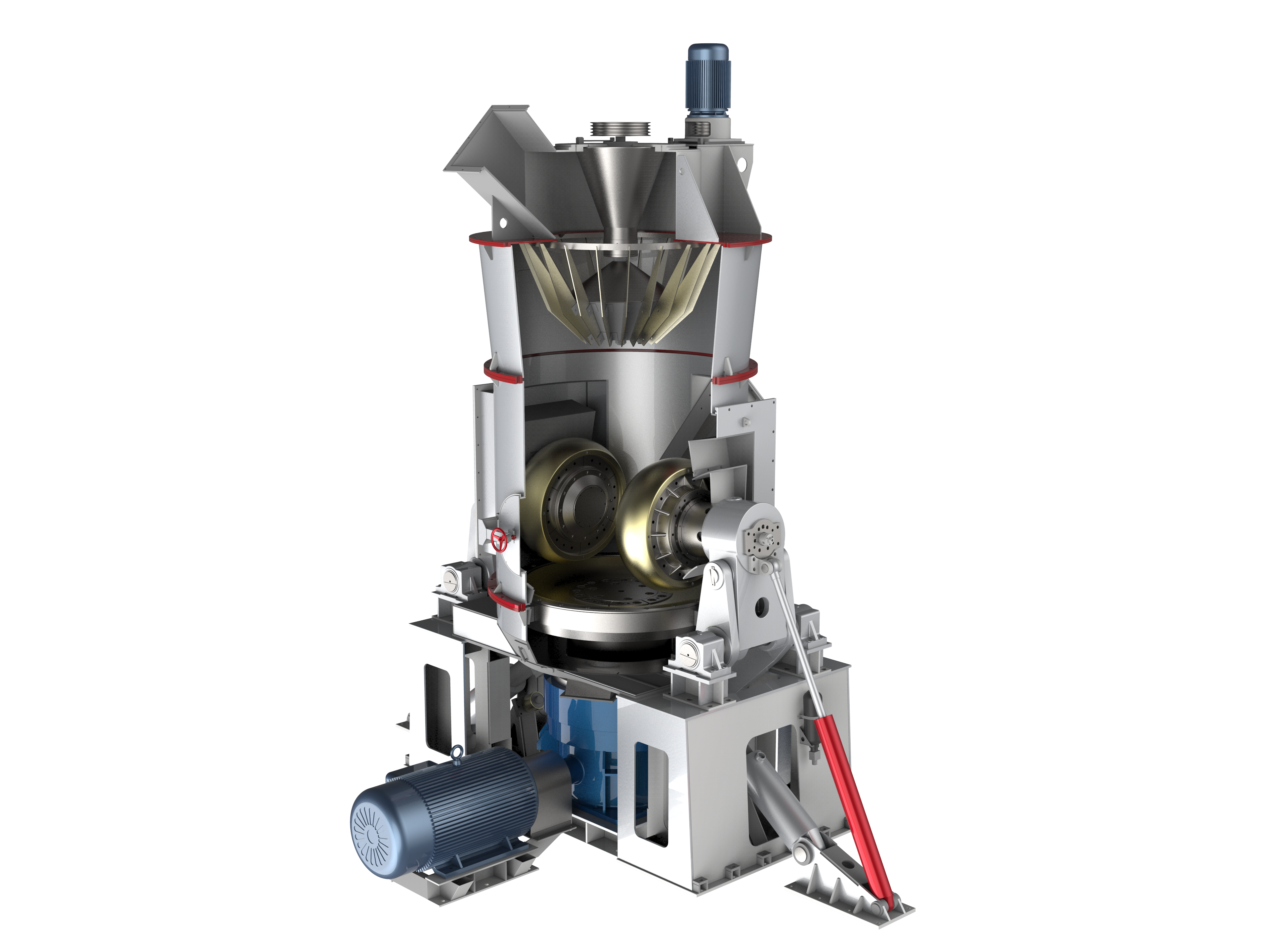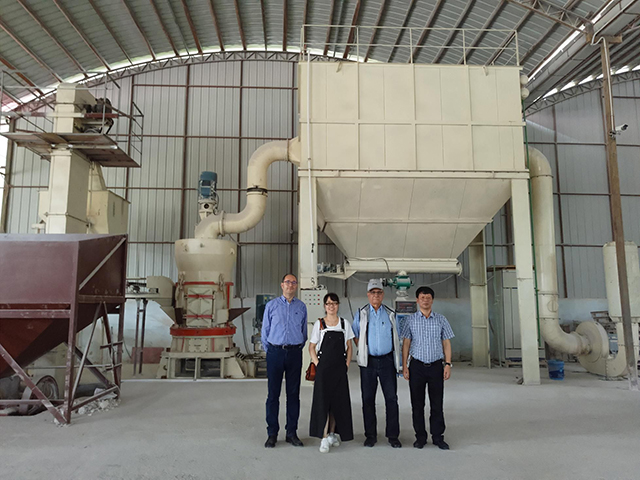Contents Catalog
- 1 Energy consumption performance
- 2 Product flexibility
- 3 Drying capacity
- 4 Equipment configuration space
- 5 Feed particle size
- 6 Product fineness and particle size distribution
- 7 Product conversion time
- 8 Grinding material pollution and product whiteness
- 9 Grinding efficiency
- 10 Initial investment and operating costs
- 11 Noise and product particle shape
- 12 Sensitivity to external conditions
In the field of industrial grinding, ultrafine vertical mills and ball mills are two common and important equipment, which play a key role in different production scenarios. A deep understanding of the advantages and disadvantages of the two is of great significance for enterprises to reasonably select grinding equipment, optimize production processes, and improve economic benefits.
Energy consumption performance
Ultrafine vertical mill: pioneer in energy saving
Ultrafine vertical mill achieves lower power consumption with its advanced grinding principle and structural design. Compared with ball mill, it can reduce electricity cost by 30% – 50% depending on the grinding property of raw materials and the size of product particles.

Taking cement production industry as an example, the grinding process of cement production consumes huge energy. The energy-saving characteristics of ultrafine vertical mill can greatly reduce the electricity expenditure of large-scale cement production enterprises, saving considerable operating costs for enterprises. Its energy-saving advantage is not only reflected in long-term cost control, but also in line with the current green and sustainable development concept advocated, which helps enterprises reduce energy consumption and reduce pressure on the environment.
Ball mill: troubled by high energy consumption
Ball mills use the collision and friction of steel balls to grind materials. This working method determines that its power consumption remains high. A large amount of electricity is used to drive the movement of steel balls and overcome the friction between materials and equipment components.
In the long-term operation process, high electricity bills have become a heavy burden for enterprises. Especially in the context of rising energy prices, the high energy consumption of ball mills has become increasingly prominent, seriously restricting the cost-effectiveness and market competitiveness of enterprises.

Product flexibility
Ultrafine vertical mill: a versatile and versatile player
Ultrafine vertical mill has high efficiency and flexible product control capabilities. It can produce ultrafine powder with a specific surface area of 9,500 (d97 = 20μm) – 25,000 (d97 = 10μm) cm²/g in one go, which can meet diverse market needs. In the ceramic raw material processing industry, different ceramic products have very different requirements for the particle size of powder. From fine ceramic crafts to building ceramics, ultrafine vertical mills can easily switch product specifications by simply adjusting production parameters, quickly respond to market changes, and win more business opportunities and market share for enterprises.
Ball mill: the limitation of single product
Ball mills can only produce single products with a fixed ratio of steel balls, and it is difficult to adapt to the market’s rapid changes in demand for products of multiple specifications. Once the production task requires changing product specifications, the ball mill often needs to spend a lot of time and manpower to adjust the steel ball ratio, and may even be unable to produce certain specific specifications of products due to the limitations of the equipment itself. The limitation of product flexibility makes enterprises feel helpless when facing diversified market demands, and miss potential business opportunities.
Drying capacity
Ultrafine vertical mill: efficient drying expert
The new ultrafine vertical mill roller mill has a high drying capacity and can introduce a large air flow to effectively transport and dry feed with a high water content. When processing raw materials with a high water content such as gypsum, the ultrafine vertical mill can be processed directly without additional drying pretreatment, which greatly simplifies the process flow and improves production efficiency. Its efficient drying capacity can also ensure the stability of the material during the grinding process and avoid product quality fluctuations caused by moisture problems.
Ball mill: obvious drying shortcomings
When grinding relatively wet raw materials, the ball mill is difficult to fully dry the material due to the limited air flow through itself. In order to ensure the grinding effect and product quality, it is often necessary to install additional drying equipment in front of it. This not only increases the equipment investment cost, but also makes the entire production process more complicated and increases the difficulty of equipment maintenance and management. At the same time, the operation of additional drying equipment will also consume more energy, further increasing production costs.
Equipment configuration space
Ultrafine vertical mill: small, compact and space-saving
The ultrafine vertical mill has a compact structure and occupies only 50-70% of the space of the ball mill. For some production sites with limited space, such as small processing plants around the city, space resources are extremely valuable. The space advantage of the ultrafine vertical mill enables it to be easily installed and laid out, saving a lot of factory space costs for the enterprise. Enterprises can use the saved space to optimize or expand other production links to improve overall production efficiency.
Ball mill: large space occupation

The ball mill is large in size and occupies a large space, which will be subject to many restrictions during equipment installation and layout. For some old factories or enterprises with tight space layout, the installation of the ball mill may require large-scale renovation of the existing site, which not only increases the construction cost, but also may affect the normal production progress of the enterprise. With the increasing scarcity of land resources and rising rental costs, the disadvantage of the large space occupation of the ball mill is becoming more and more prominent.
Feed particle size
Ultrafine vertical mill: Advantages of large particle size feed
The feed particle size of the ultrafine vertical mill depends on the diameter of the grinding roller, and it can directly accept raw materials with larger particle sizes without over-crushing. In the ore processing after mining, the ultrafine vertical mill can directly process larger pieces of ore, reducing the workload and equipment investment in the early crushing process. This not only improves production efficiency, but also reduces energy consumption and equipment wear caused by excessive crushing, bringing tangible economic benefits to the enterprise.
Parameter comparison table
| CRseries ultra-fine vertical mill specifications and models | ||
|---|---|---|
| Specifications | CR1200 | CR1400 |
| Production Capacity(t/h) | 3.8~12.0 | 6~16.0 |
| Product fineness(mesh) | 325~1500 | 325~1250 |
| System power (main engine power + fan power + classifier power + auxiliary engine power)(kW) | 560~600 | 700~750 |
| CR1200 Heavy Superfine Calcium Carbonate Data | |||||
|---|---|---|---|---|---|
| Fineness(mesh) | 325 | 600 | 800 | 1000 | 1250 |
| Output (t/h) | 10~12 | 7.5~8.0 | 6.5~7.0 | 5.0~5.5 | 3.8~4.3 |
| Particle size distribution D97 (μm) | 45±1 | 25±1 | 20±1 | 13±1 | 10±1 |
| Specific surface area of trifoliate orange (cm²/g) | 6500 | 10000 | 12500 | 14000 | 16000 |
| ±1000 | ±1000 | ±1000 | ±1000 | ±1000 | |
| Raw material requirements: calcite or marble, Mohs hardness ≤3, feed particle size ≤10mm. | |||||
| CR1400 Heavy Ultrafine Calcium Carbonate Data | ||||
|---|---|---|---|---|
| 细度(mesh) | 325 | 600 | 1000 | 1250 |
| Output (t/h) | 15~16 | 11~12 | 7.5~8.0 | 6.0~6.5 |
| Particle size distribution D97 (μm) | 45±1 | 25±1 | 13±1 | 10±1 |
| Specific surface area of trifoliate orange (cm²/g) | 6000 | 12000 | 14000 | 16000 |
| ±1000 | ±1000 | ±1000 | ±1000 | |
| Raw material requirements: calcite or marble, Mohs hardness ≤3, feed particle size ≤10mm. | ||||
The above data is for reference only. Please refer to the actual product or product manual for specific information.
Ball mill: Small particle size feed limitation
The ball mill is limited by its maximum steel ball diameter and can only feed smaller raw materials. This requires more refined crushing before the raw materials enter the ball mill, which increases the production links and equipment investment. Moreover, excessive crushing may lead to over-crushing of raw materials, affecting product quality, while also increasing energy consumption and production costs.
Product fineness and particle size distribution
Ultrafine vertical mill: high yield and excellent distribution of fine powder
LURM roller mill uses high and adjustable grinding pressure to produce a large amount of fine powder. It is equipped with a horizontal airflow classifier with the most advanced technology on the top, which can produce products with higher selectivity and more ideal particle size distribution. In the paint production industry, the fineness and particle size distribution of powders are extremely high. The products produced by ultrafine vertical mills can better meet the high-quality requirements of paints, making the paints have better leveling, hiding power and gloss, and improving the market competitiveness of paint products.
Ball mill: low proportion of fine powder and poor distribution
The particle size distribution of products produced by ball mills is usually low in fine powder proportion, and the particle size distribution is not steep enough compared with the traditional classifiers used. In some application scenarios with strict requirements on product fineness and particle size distribution, the products produced by ball mills may not meet the quality standards and need to be processed twice or mixed with other fine powders to adjust product performance, which undoubtedly increases production costs and production cycles.
Product conversion time
Ultrafine vertical mill: fast conversion improves efficiency
Ultrafine vertical mill can convert different raw materials on the same mill in a very short time to produce different products, greatly improving production efficiency. In the pharmaceutical industry, it is necessary to frequently switch to produce different types of pharmaceutical raw materials. The fast product conversion capability of ultrafine vertical mill can quickly respond to changes in production tasks, reduce equipment downtime, improve equipment utilization, and bring higher production benefits to enterprises.
Ball mill: time-consuming cleaning affects production
Ball mills require a long cleaning time, which will cause a long downtime during product switching. This not only reduces the production efficiency of the equipment, but may also affect the company’s order delivery time and increase the company’s operating costs. In today’s increasingly competitive market, this shortcoming of the ball mill may put companies at a disadvantage in quickly responding to market demand.
Grinding material pollution and product whiteness
Ultrafine vertical mill: low pollution and high whiteness
Ultrafine vertical mill has low pollution of grinding materials and high product whiteness because there is no grinding medium wear. When producing products with extremely high color requirements such as white pigments, the whiteness advantage of ultrafine vertical mill makes its products more competitive in the market. High whiteness products can meet the strict requirements of the high-end market for product color, providing a strong guarantee for enterprises to open up high-end markets and increase product added value.
Ball mill: wear and pollution and low whiteness
Due to the wear of grinding media, the ball mill will reduce the whiteness of the product. When steel balls are used as grinding media, the wear of steel balls will introduce metal impurities and affect the color of the product. For some products with high requirements for color purity, such as high-end papermaking fillers, food additives, etc., the products produced by ball mills may not meet the quality standards, limiting their application in these fields.
Grinding efficiency
Ultrafine vertical mill: high efficiency and low wear create benefits
LURM vertical roller mill uses high-pressure wheel to grind materials, with high grinding efficiency and low wear. In large-scale ore grinding operations, ultrafine vertical mill can complete the same output of grinding tasks in a shorter time, and the equipment wear is less, reducing the equipment maintenance cost. High grinding efficiency enables enterprises to improve production capacity and meet the market’s large demand for products. At the same time, the low wear characteristics extend the service life of the equipment, reduce the frequency of equipment replacement and maintenance, and save a lot of money and time costs for enterprises.
Ball mill: low collision and friction efficiency
Ball mills use collision and friction methods, and have low grinding efficiency. The collision and friction between steel balls and materials not only have low energy utilization, but also easily cause wear of steel balls and equipment linings. Frequent equipment maintenance and steel ball replacement increase the operating costs of enterprises. At the same time, low grinding efficiency also limits the production scale and production speed of enterprises. In the case of rapid growth in market demand, ball mills may not be able to meet the production needs of enterprises.
Initial investment and operating costs
Ultrafine vertical mill: significant long-term benefits
The initial investment cost of the ultrafine vertical mill is slightly higher than that of the ball mill, but its operating cost is very low because there is no grinding medium consumption and low power consumption. In the long run, with the operation of the equipment, the low operating cost advantage of the ultrafine vertical mill gradually emerges, which can save a lot of money for the enterprise. Its stable operation state and low maintenance requirements also reduce the production stagnation losses caused by equipment failure. Taking all factors into consideration, the ultrafine vertical mill is more cost-effective and suitable for enterprises with long-term large-scale production.
Ball mill: small initial investment but high long-term cost
Although the ball mill has a slight advantage in initial investment, the operating cost remains high in the long run due to grinding medium consumption and high power consumption. Frequent replacement of grinding media and high electricity costs require enterprises to invest a lot of money in the long-term operation process, and frequent maintenance and repair of equipment will also affect production efficiency and increase hidden costs. For enterprises pursuing long-term stable development and cost control, the long-term high cost disadvantage of the ball mill is more obvious.
Noise and product particle shape
Ultrafine vertical mill: low noise, suitable for multiple scenarios
The workshop noise generated by the ultrafine vertical mill is much lower than that of the ball mill, creating a more comfortable working environment for workers. In terms of product particle shape, although the sphericity is slightly worse, in most fields where the particle shape is not required, the ultrafine vertical mill products can fully meet the needs. For example, in industries such as building materials production and general chemical raw material processing, low noise and acceptable particle shape make ultrafine vertical mills have a wide range of application prospects, which can not only protect the physical and mental health of workers, but also meet production needs
Ball mill: high noise but good sphericity
The noise generated by the ball mill during operation is high, which causes great interference to the working environment. Additional sound insulation measures may be required to reduce the impact of noise, which increases the construction and operating costs of the enterprise. However, the ball mill product has a good sphericity. In some application scenarios with specific requirements for particle shape, such as ball manufacturing and certain high-end electronic material production, the ball mill products have unique advantages and can meet the strict standards of these industries for product shape.
Sensitivity to external conditions
Ultrafine vertical mill: raw material impurities need to be strictly controlled
Ultrafine vertical mills are sensitive to metal foreign matter, and raw materials need to be strictly iron-removed during the production process, otherwise it may affect the normal operation of the equipment. This requires enterprises to invest more energy and equipment in the raw material pretreatment process to ensure the purity of the raw materials. Although this increases certain production costs and management difficulties, in some production fields with extremely high product quality requirements and no impurities are allowed to be mixed, such as food, medicine and other industries, ultrafine vertical mills can produce high-quality products by strictly controlling raw materials.
Ball mill: high stability and strong adaptability
Ball mills are less susceptible to external conditions and have higher stability. In some production environments with more raw material impurities, ball mills can operate relatively stably and do not require overly complicated raw material pretreatment processes. This makes ball mills have certain advantages in some industrial productions with relatively low product quality requirements and complex raw material sources, such as rough processing of some ordinary ores and production of building aggregates, which can adapt to relatively harsh production conditions and ensure the continuity of production.
Ultrafine vertical mills and ball mills have different advantages and disadvantages. When choosing grinding equipment, you should consider your own production needs, raw material characteristics, site conditions, cost budget, and the target market’s requirements for product quality, and weigh the pros and cons to make the most suitable decision for the development of your company. Whether you are pursuing high efficiency and energy saving, product flexibility, or adapting to complex raw materials and meeting specific product shape requirements, you can maximize your company’s production benefits by choosing equipment reasonably.

